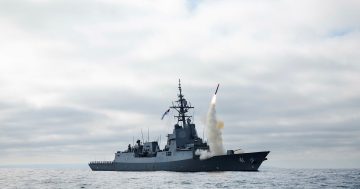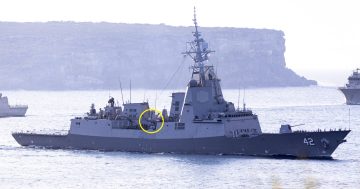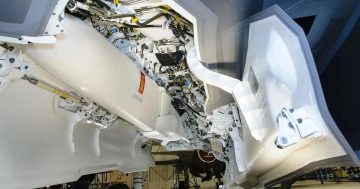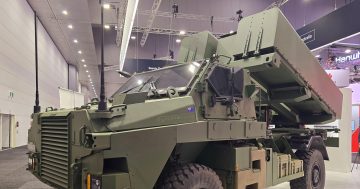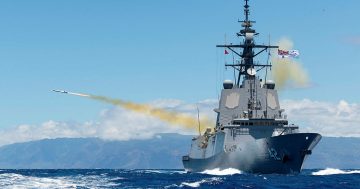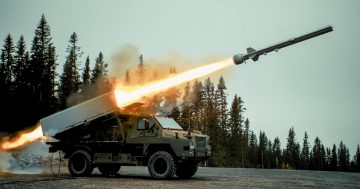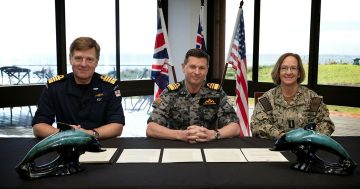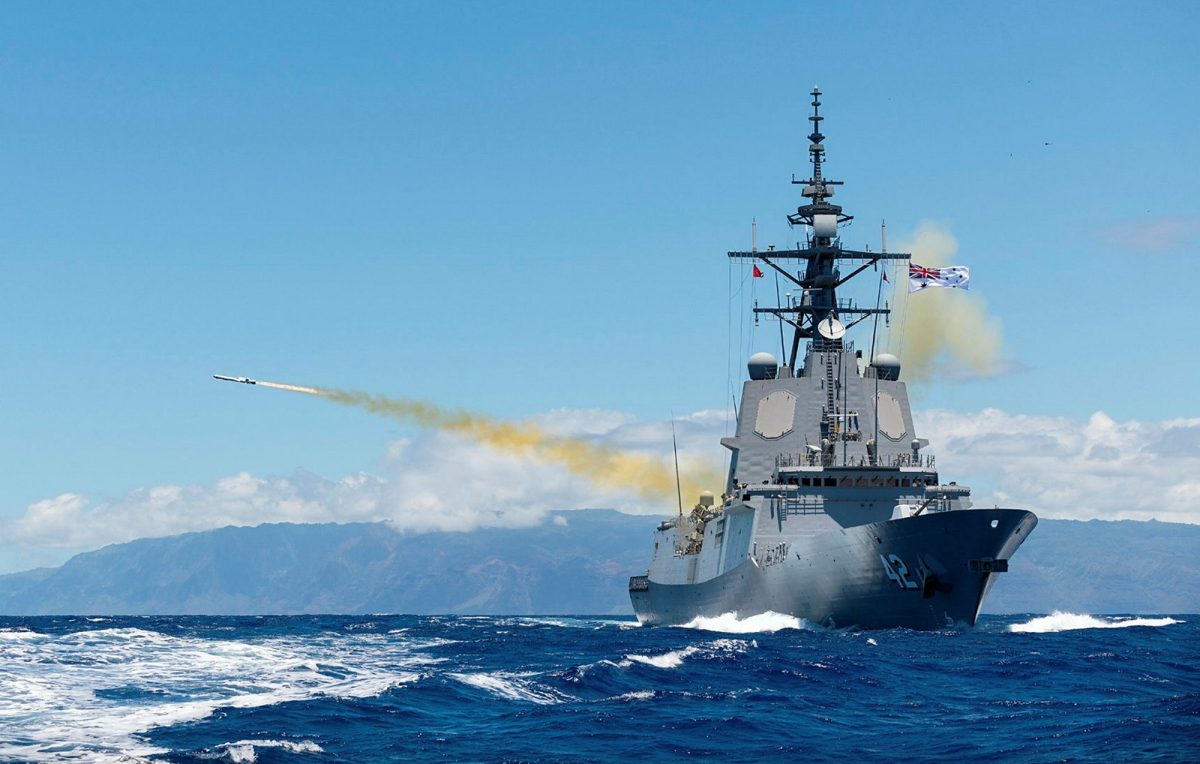
HMAS Sydney launches an NSM at the former USS Tarawa off the coast of Hawaii. Photos: ADF.
The Royal Australian Navy has conducted the first live fire of a Kongsberg Naval Strike Missile (NSM) during a ‘’sink-ex’’ at the Rim of the Pacific (RIMPAC) series of exercises off Hawaii.
The Hobart-class destroyer HMAS Sydney took part in the sinking of the former US Navy amphibious ship ex-USS Tarawa, which was sunk by live fire from ships, submarines and aircraft during the exercise.
The event marked the first time an NSM has been fired from an RAN vessel, after the three Hobart-class ships started receiving their NSM canisters earlier this year. HMAS Sydney was first spotted sporting the new quad-pack canisters midships when it sailed into its home port of Sydney in May.
The NSM is an advanced low-observable anti-ship missile designed to operate in open ocean or in littoral regions. The RAN selected the NSM to replace its ageing RGM-84 Harpoon missiles under the Project SEA 1300 Phase 1 Naval Guided Weapons program in 2022, and a contract was signed in early 2023.
The missile is launched from deck-mounted canisters by a booster rocket. After launch, the rocket falls away and an internal jet engine takes over. The NSM’s seeker can distinguish between commercial vessels and legitimate targets, and is able to distinguish ships from background clutter in littoral regions.
RIMPAC is one of the world’s largest multinational naval exercises and is centred on the Hawaiian islands and the port of Pearl Harbour. The 2024 iteration includes 25,000 participants from 30 nations and features 40 surface ships, four submarines, 14 national land forces, and more than 170 aircraft.
This year, the ADF has sent just 320 personnel, including the crew of HMAS Sydney and a single RAAF P-8A Poseidon maritime response aircraft.
By comparison, in 2022 the ADF attendance numbered some 1600 personnel, including three naval surface vessels, a Collins-class submarine, two RAAF P-8As, mine warfare and clearance diving capabilities, and a Joint Landing Force led by the Army’s 2nd Battalion Royal Australian Regiment.
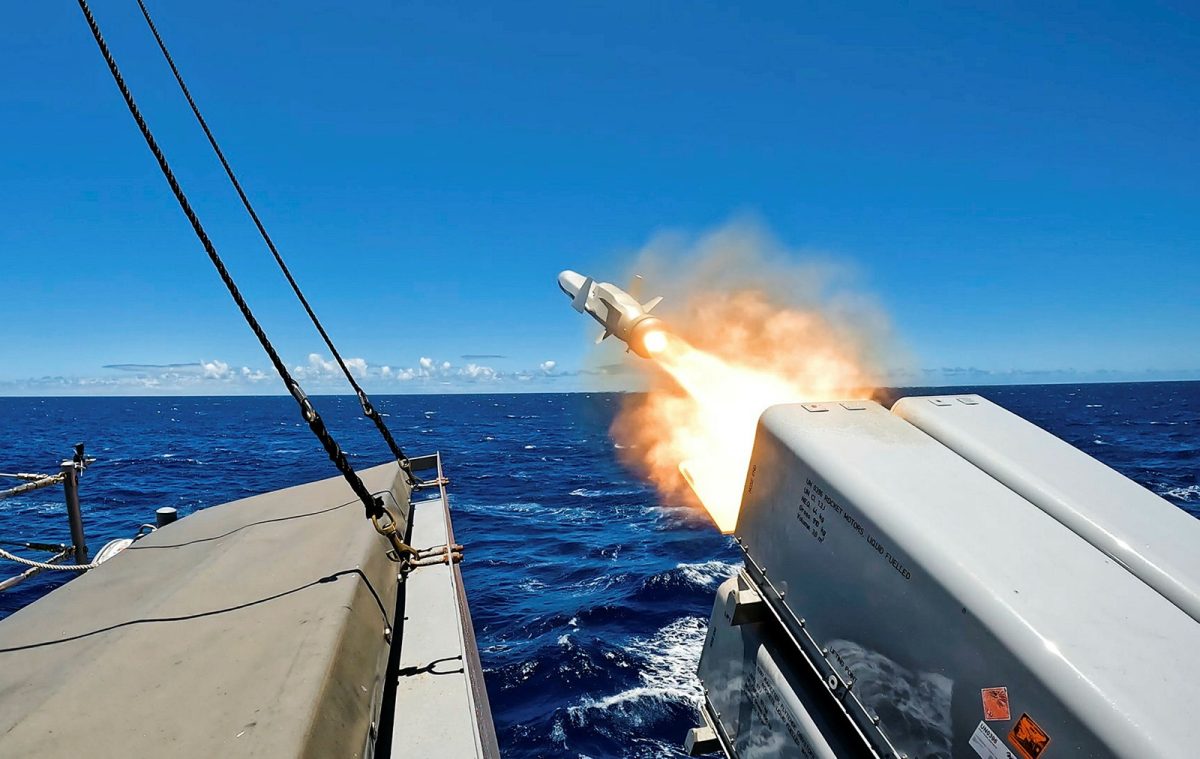
The NSM is launched by a rocket booster from a deck-mounted canister, after which an internal jet engine takes over.
Minister for Defence Industry Pat Conroy said the firing was the culmination of a partnership between Defence and industry.
“This collaboration between Defence and industry partner Kongsberg Defence Australia, along with local Australian companies such as Marand, Aerobond, Australian Precision Technologies, Nupress Group, Axiom Precision Manufacturing and Stahl Metall, demonstrates the Australian Government’s commitment to working with defence industry to accelerate enhanced lethality capability integration,” he said.
“The National Defence Strategy outlined a strategy of denial as the cornerstone of Defence planning to prevent any potential adversary from succeeding in coercing Australia through force, while supporting regional security and prosperity.
“This firing was an excellent example of Defence, our international partners and Australian industry working together to accelerate the delivery of new capability to promote regional stability.
“Australia’s strategic environment is changing rapidly. The introduction of the Naval Strike Missile allows our navy’s surface ships to conduct long-range maritime strikes and delivers on our promise to increase the capability and lethality of our navy.”
Chief of Navy Vice Admiral Mark Hammond said the firing of the NSM during RIMPAC represented a significant increase in the lethality of the navy’s surface fleet.
“Naval Strike Missile is a key capability for the lethality enhancement and survivability of our ships and enables our ability to hold an adversary at risk at greater range,” he said.
“Multi-domain strike capabilities including Naval Strike Missile are foundational to deterring any potential adversary’s attempts to project power against Australia.”



